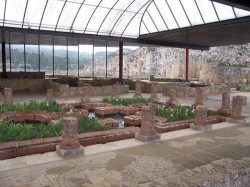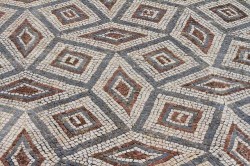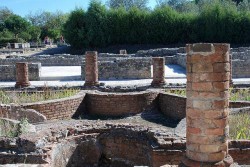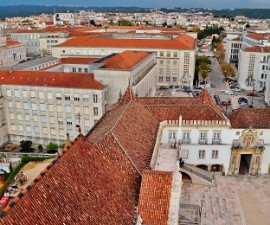Conimbriga is one of Portugal’s largest Roman settlements and arguably its most important. It is classified as a National Monument for its historical importance and is a popular sightseeing destination for visitors to nearby Coimbra and the surrounding area of north central Portugal.
Conimbriga is found at a distance of 16km from Coimbra and just 2km from the village of Condeixa-a-Nova. It is easily reached for a morning, afternoon or full-day trip from Coimbra or, if you prefer to stay nearby, there is a popular luxury pousada in the village of Condeixa-a-Nova, which makes a great base from which to explore the surrounding area.
Conimbriga is named after a pre-Indo-European word meaning “rocky height or outcrop” and the Celtic word “briga”, which is used to signify a protected place. Built on a sunny high plane, Conimbriga was a thriving village when the Romans arrived and occupied it in 139 BC.
It continued to flourish until the second century AD, under the Emperor Augustus, whose reign saw the forum and public baths built. The former is reconstructed in the museum which is located nearby. The site is an impressive size and provides a significant insight into life and culture during the heyday of the Roman Empire in the region we now know as Portugal.
It is estimated that Conimbriga had over 10,000 inhabitants, pointing to its position as an important administrative centre in the region. While Conimbriga was not Portugal’s largest Roman city, it has certainly remained the best preserved. To date, it is estimated that only a tenth of the city has been excavated, and it is from this that archaeologists have been able to piece together its urban structure.
The city walls are superbly preserved and there are some delightful examples of mosaic floors and the foundations of houses and public buildings throughout the city. The most important examples are Cantaber’s House, a huge residence dating back to the third century AD, which is one of the largest in the western Roman world, and the House of the Fountains.
The latter is comprised of colonnaded gardens, which were adorned by water jets, presumably to cool the inhabitants during periods of hot summer sun. The House of the Fountains is also home to some of the best preserved mosaic floors, which are elaborately formed to depict scenes from mythology.
Other places of interest within the site of Conimbriga include the baths, where you can still see the stone heating ducts in position beneath the missing floors; the amphitheatre, with a capacity for some 500 spectators (it is from this that archaeologists have been able to estimate the size of the city); the forum and of course the museum.
The museum is an important stop during your visit to Conimbriga, as it offers an opportunity to read, hear and understand more about the settlement, its development, its historical importance and, of course, the suffering at the hands of the barbarians in 465 and 468, which led to its demise.





